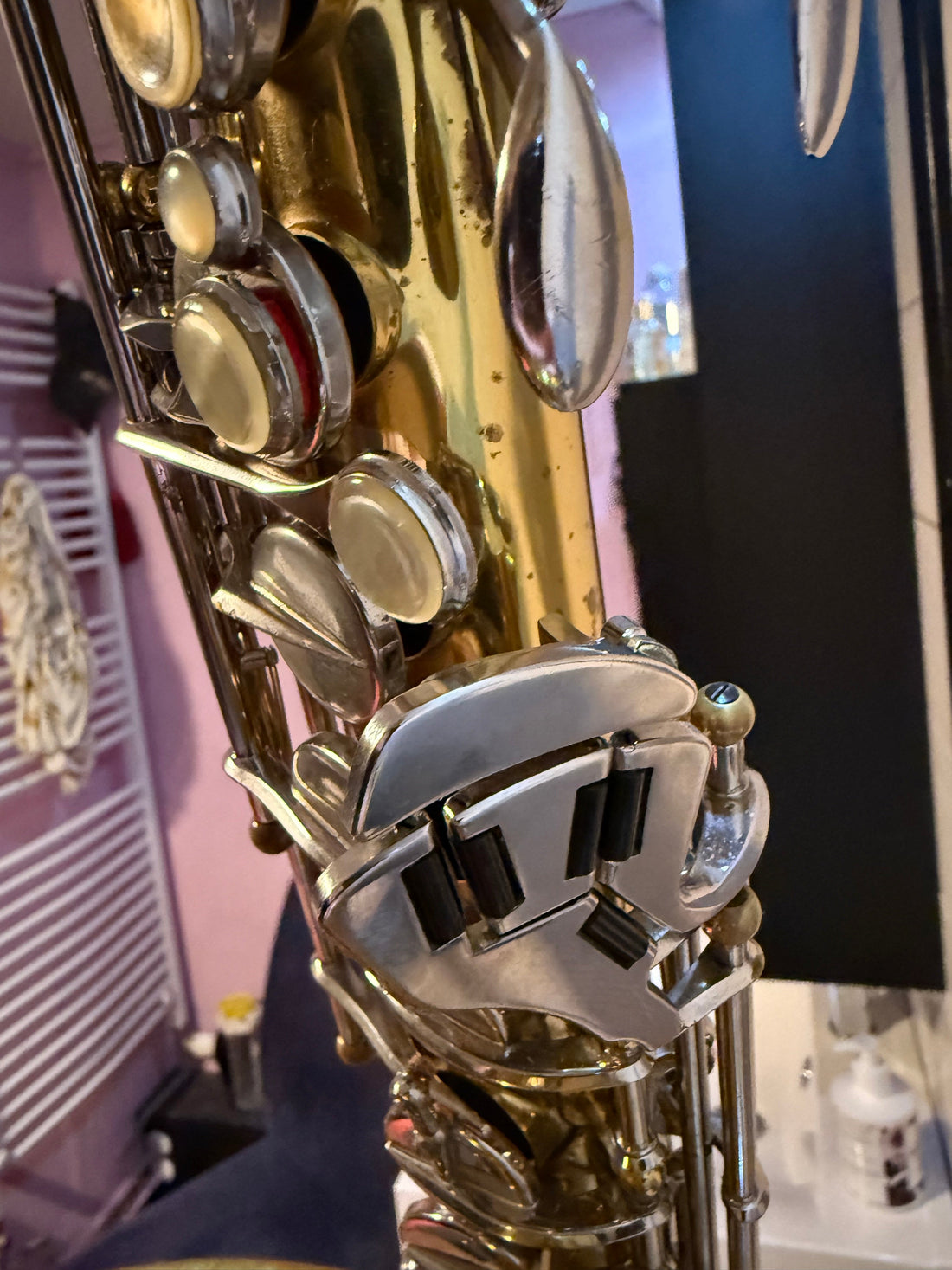
The History of Buescher Saxophones – A Timeless Sound
Share
When talking about legendary saxophone brands that defined the timbre of the 20th century, the name Buescher inevitably comes up. At QualitySax, we like to delve into the history of iconic instruments, and Buescher deserves a place of honor. In this blog, we take you on a journey through the history of Buescher saxophones: from their origins to their influence on the modern saxophone world.
The Origin: Ferdinand August “Gus” Buescher
The Buescher story begins in the late 19th century in Elkhart, Indiana – the “band instrument capital of the world”. Ferdinand August Buescher, a German immigrant with a passion for building musical instruments, initially worked for Conn, another renowned saxophone manufacturer. In 1894, he founded his own company: the Buescher Manufacturing Company.
Initially, Buescher mainly produced brass instruments, but soon the focus shifted to saxophones. And not just any saxophones – Buescher developed models that were known for their warm, round sound and their reliability in intonation.
The Golden Years: 1920–1940
In the 1920s and 1930s Buescher reached its peak. The True Tone line was extremely popular among professional musicians. These saxophones were known for their characterful tone and solid construction, and were widely used in big bands and dance orchestras.
Another iconic model from this period was the Aristocrat , introduced in the 1930s. Combining bright projection with a smooth response, the Aristocrat was prized by jazz and classical saxophonists alike. Later came the 400 series , which is still sought after by collectors and players worldwide for its unique tone and aesthetics, including the distinctive backwards-set bell.
Innovation and Collaborations
Buescher was not only known for the quality of their instruments, but also for their innovations. For example, they introduced the snap-in pads , a unique system where the pads were attached to the keys without glue. This made maintenance easier and increased the lifespan of the instrument.
Buescher also worked together with the well-known Selmer (USA), which took over the company in the 1960s. Although the production and character of the instruments changed under Selmer's leadership, the original Buescher models from the first half of the 20th century remain unmatched in their historical value and sound.
Buescher Today: Heritage and Appreciation
Today, vintage Buescher saxophones are cherished by collectors, jazz enthusiasts and professional players who are looking for an authentic, warm sound that modern instruments often lack. At QualitySax, carefully restored Buescher saxophones regularly arrive - each with its own story and character.
Whether you are a fan of classic jazz, or simply looking for a unique instrument with soul and history, a Buescher saxophone is more than a wind instrument: it is a piece of living music history.
Curious about our collection of vintage Bueschers?
Contact us or view our current stock. We are happy to help you find an instrument that suits your sound and playing style.